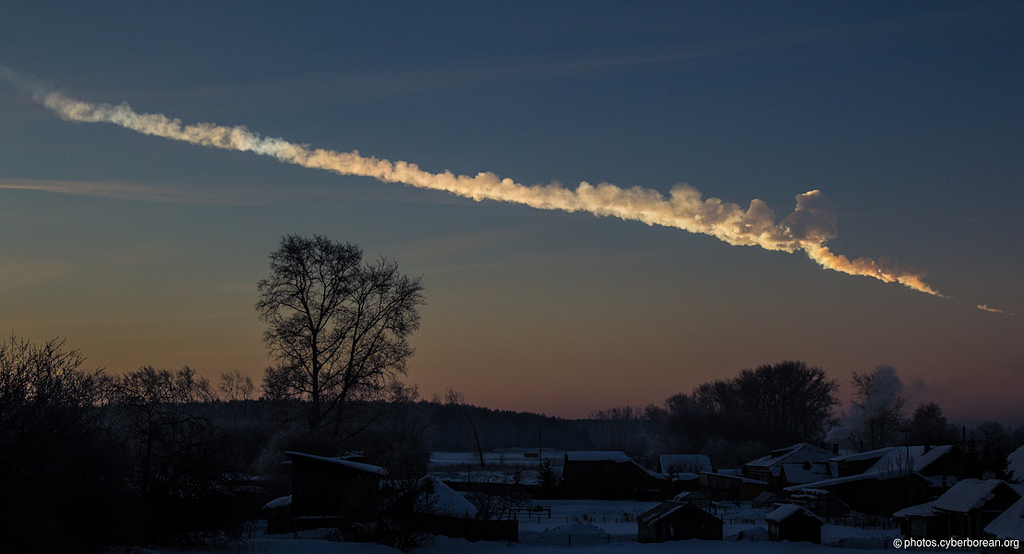19 February 2013
Detecting nuclear explosions – plus meteors, tsunamis, and more
Posted by kramsayer

A meteor leaves a trail over Russia on Feb. 15, 2013. With a monitoring array designed to detect nuclear tests, scientists have been able to estimate its size at around 10,000 tons. (Credit: Flickr user alexeya)
BOSTON — On 12 February, North Korea detonated a nuclear device beneath a remote mountain range – and scientists in Norway were able to pinpoint the blast’s location within hundreds of meters. Three days later, a meteor roared through Earth’s atmosphere above Russia – and researchers turned to the same monitoring network to estimate its weight of 10,000 tons.
It was a busy week for the seismometers, ocean-monitoring acoustic stations and other instruments associated with the preparatory commission for the Comprehensive Nuclear-Test-Ban Treaty Organization – or CTBTO – monitoring rogue nuclear tests worldwide. At the American Association for the Advancement of Science (AAAS) meeting in Boston on Sunday, researchers showed that the 288-instrument CTBTO array can tackle scientific research as well as nuclear detective work.
“It’s an amazing system around the world,” said Raymond Jeanloz, a professor of Earth and planetary science and astronomy at the University of California, Santa Cruz.
Scientists studying a Utah mine collapse in 2007, for example, examined the seismic waves detected by the array to determine that the accident was caused by the mine’s ceiling falling in, not an explosion or earthquake. The 2004 Sumatra tsunami was recorded “roaring across the Indian Ocean,” Jeanloz said.
And last week, the seismic monitoring stations captured the shock wave caused when space rock crashed through the atmosphere over Russia.
With information streaming in from different stations, scientists were able to triangulate the location of the meteor, and are now using the recorded information to refine estimates of the fireball’s size.
“These non-treaty implications are incredibly important,” Jeanloz said.
The network of seismometers is also put to work with basic science research. Miaki Ishii, an associate professor of Earth and planetary sciences at Harvard University, and her colleagues are looking at how seismic waves reflect off the Earth’s solid inner core – and return to instruments on the Earth’s surface – to learn more about the planet’s depths.
Still, Jeanloz noted that the network of monitoring stations is designed to be on the lookout for nuclear tests – like the one in North Korea’s mountains – and researchers are aware that they can’t let these other uses distract from the program’s main mission of detecting nuclear weapons testing.
–Kate Ramsayer, AGU science writer



 GeoSpace is a blog on Earth and space science, managed by AGU’s Public Information staff. The blog features posts by AGU writers and guest contributors on all sorts of relevant science topics, but with a focus on new research and geo and space sciences-related stories that are currently in the news.
GeoSpace is a blog on Earth and space science, managed by AGU’s Public Information staff. The blog features posts by AGU writers and guest contributors on all sorts of relevant science topics, but with a focus on new research and geo and space sciences-related stories that are currently in the news.